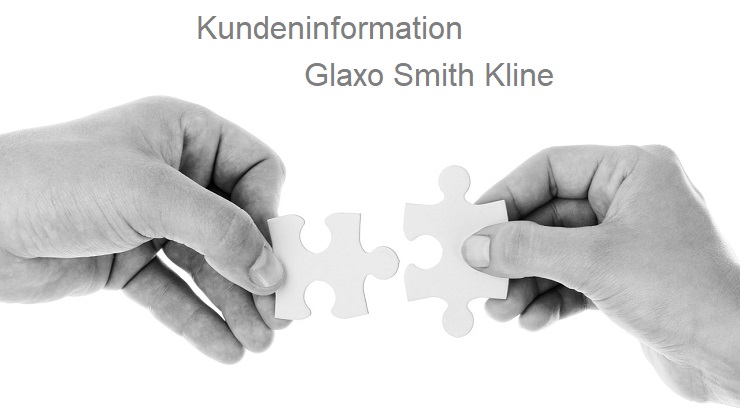Issued: London UK – LSE Announcement TESARO, an oncology-focused business acquired by GlaxoSmithKline plc (LSE/NYSE: GSK), announced today the presentation of data from the Phase 1/2 GARNET study evaluating dostarlimab in women with recurrent or advanced endometrial cancer who progressed on or after a platinum-based regimen. These data were presented at the 2019 Society for Gynecologic Oncology (SGO) Annual Meeting on Women’s Cancer in Honolulu, Hawaii. The preliminary results demonstrate clinically meaningful and durable response rates of dostarlimab (anti-PD-1 antibody, formerly TSR-042), in this patient population, regardless of microsatellite instability status. In addition, the safety findings indicate that dostarlimab is well tolerated with a safety profile consistent with what is expected of anti-PD-1 therapy. Further data from the GARNET study will be analysed using the RECIST 1.1 criteria to support regulatory filing for dostarlimab in endometrial cancer at the end of 2019. Mary Lynne Hedley, Ph.D., President and Chief Operating Officer of TESARO, said, “Currently, treatment options for women with advanced or recurrent endometrial cancer are limited, with only one FDA-approved agent for a subset of these patients. We intend to use these and other data from the GARNET study to seek regulatory approval of dostarlimab to potentially address the critical unmet treatment needs of women whose disease has progressed. The data presented today evaluating dostarlimab in women with recurrent/advanced endometrial cancer, combined with earlier data in patients with non-small cell lung cancer, reinforces the potential of dostarlimab in treating patients with a variety of solid tumours.” Endometrial cancer (EC) is the most common gynaecologic malignancy in the U.S. There are limited treatment options for women whose disease progresses on or after first-line therapy. EC can be classified as microsatellite stable (MSS/75%) or microsatellite instability-high (MSI-H/25%). Currently, there is only one approved therapy in the recurrent EC setting for the subset of patients with MSI-H tumours, and no approved treatments for patients with MSS EC who have recurred after platinum-based chemotherapy. Key Study Findings A total of 125 patients were analysed including 41 MSI-H (33%), and 79 MSS (63%) patients, as well as 5 with an unknown MSI-status (4%). Dostarlimab was dosed at 500 mg once every 3 weeks for 4 doses, followed by 1000 mg once every 6 weeks until disease progression. Determination of MSI status was made based upon a central test using next generation sequencing (NGS). Treatment with dostarlimab monotherapy resulted in a clinically meaningful response rate in recurrent or advanced EC who progressed on or after a platinum-based regimen, regardless of MSI status. Overall response rates by irRECIST in the full population, MSI-H population, and MSS population were 30%, 49%, and 20%, respectively. Disease control rate in the full population, MSI-H population, and MSS population was 53%, 63% and 47%, respectively. At the time of data cutoff, treatment was still ongoing in 84% of responders, with 89% of the responders (33 of 37) having been on treatment for more than six months and 49% of responders (18 of 37) having been on treatment for more than one year. Durability of response was similar between the MSI-H and MSS cohorts. The median duration of response (DOR) has not yet been reached. All responses were assessed using irRECIST criteria. The data show that 88 out of 125 (70.4%) patients had at least 1 treatment-emergent adverse event (TEAE). The most commonly reported TEAEs related to dostarlimab were fatigue (14.4%), diarrhea (12.8%), and nausea (12.0%). In general, adverse events were low grade, with only 13.6% of patients experiencing grade 3 or higher adverse events. No deaths occurred due to a treatment-related adverse event. In total, 5.6% of all patients experienced a grade 3 or higher immune related, treatment-related adverse event. About GARNET The ongoing Phase 1/2 GARNET trial is evaluating dostarlimab as monotherapy in patients with advanced solid tumours. GARNET included a weight-based dose escalation study (Part 1) and a fixed-dose safety study (Part 2A), both of which have been completed. Results of these studies were used to determine the recommended Phase 2 dose (RP2D; 500 mg Q3W for the first 4 cycles then 1000 mg Q6W). Part 2B of the study includes four expansion cohorts: MSI-H endometrial cancer, MSI-H non-endometrial cancer, MSS endometrial cancer, and non-small cell lung cancer (NSCLC). Data from the NSCLC cohort have been previously presented at Society for Immunotherapy of Cancer (SITC) in 2018. About dostarlimab Dostarlimab (TSR-042) is an investigational humanized anti-programmed death (PD)-1 monoclonal antibody that binds with high affinity to the PD-1 receptor and effectively blocks its interaction with the ligands PD-L1 and PD-L2. If approved, dostarlimab would be the first anti PD-1 therapy administered as monotherapy every 3 weeks for 4 doses then every 6 weeks thereafter. Dostarlimab was developed as part of a collaboration between TESARO and AnaptysBio, Inc. This collaboration was initiated in March of 2014, and is focused on the development of monospecific antibody drugs targeting PD-1, TIM-3 (TSR-022), and LAG-3 (TSR-033), in addition to a bi-specific antibody drug candidate targeting PD-1/LAG-3 (TSR-075). Dostarlimab is not currently approved for use anywhere in the world. About TESARO TESARO, an oncology-focused business within GSK, devoted to providing transformative therapies to people facing cancer. For more information, visit www.tesarobio.com, and follow us on Twitter and LinkedIn. About GSK GSK is a science-led global healthcare company with a special purpose: to help people do more, feel better, live longer. For further information please visit www.gsk.com/about-us. Cautionary statements regarding forward-looking statements
GSK cautions investors that any forward-looking statements or projections made by GSK, including those made in this announcement, are subject to risks and uncertainties that may cause actual results to differ materially from those projected. Such factors include, but are not limited to, those described under Item 3.D Principal risks and uncertainties in the company’s Annual Report on Form 20-F for 2018.
Link zum Originalbeitrag

